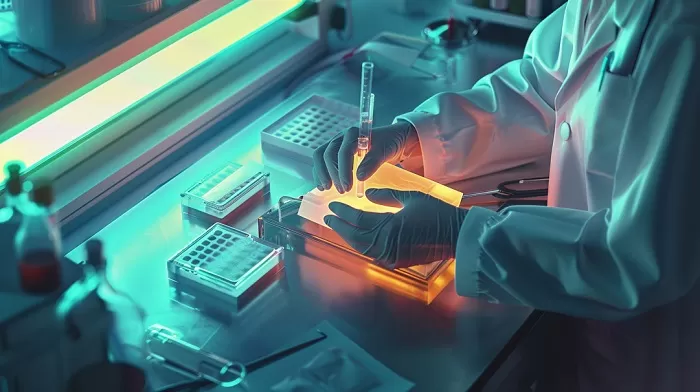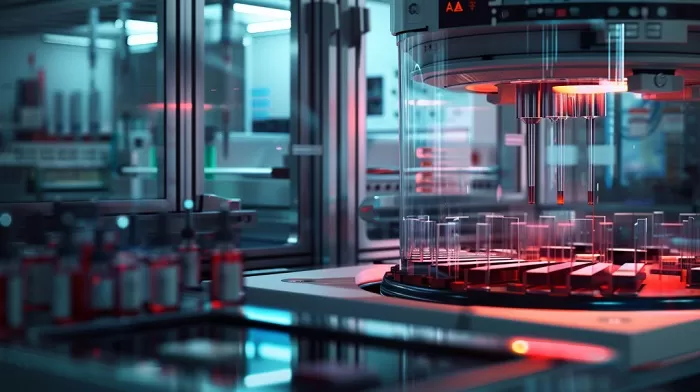Accurate and reliable tissue processing is the bedrock of effective histopathology, directly influencing diagnostic precision and research outcomes. This article delves into the critical factors that govern successful tissue preparation, from the fundamental importance of preserving tissue integrity to the nuances of reagent quality and temperature control. Furthermore, we provide a comprehensive comparison of manual and automated tissue processing methods, outlining their operational differences, efficiencies, safety profiles, and suitability for various laboratory settings, ultimately guiding the informed choice between these essential techniques.
1. Preserves Tissue Integrity
Tissue processing preserves the structural integrity of biological specimens by preventing decomposition and autolysis. This ensures that tissues remain in a life-like state, allowing for accurate microscopic analysis and long-term storage without compromising cellular or architectural details.
2. Enables Thin Sectioning
Processing makes tissues firm enough to cut into thin, uniform slices using a microtome. These sections are essential for microscopic evaluation, as they allow clear observation of internal structures, aiding in precise pathological or research-based assessments.
3. Improves Stain Uptake
Dehydration and infiltration with paraffin or resin during tissue processing enhance the tissue’s ability to absorb stains. This leads to better contrast and differentiation of cellular components, helping pathologists identify abnormalities and diagnose diseases more accurately.
4. Supports Accurate Diagnosis
Well-processed tissues display cellular and subcellular details clearly. This clarity is vital for pathologists to make accurate diagnoses, especially for diseases like cancer, where identifying small structural changes is crucial for effective treatment planning.
5. Prevents Technical Artifacts
Proper tissue processing minimizes artifacts such as shrinkage, distortion, or tissue tearing. Reducing these errors is essential, as artifacts can obscure or mimic disease, leading to potential misinterpretation and incorrect clinical conclusions.

Tissue processing is a critical step in histopathology that prepares biological tissue for microscopic examination by embedding it in a suitable medium such as paraffin wax. The quality of tissue processing directly impacts the clarity, accuracy, and reliability of histological results. Several factors influence how well tissue is processed, and understanding these is vital to avoid diagnostic errors and ensure high-quality slides.
1. Tissue Size and Thickness
One of the most significant factors in tissue processing is the size and thickness of the tissue sample. Larger and thicker specimens take more time for reagents to penetrate. If the tissue is too thick, it may result in incomplete fixation, poor dehydration, or uneven paraffin infiltration. This can lead to improper sectioning and inconsistent staining, which compromise diagnostic accuracy.
Best practice: It is generally recommended to keep tissue thickness between 3 to 5 mm for optimal processing. Trimming tissues uniformly also ensures even exposure to reagents.
2. Type of Tissue
Different tissue types respond differently to processing due to their unique structures and compositions. For example, fatty tissues like breast or brain tissue require longer times for clearing and paraffin infiltration because lipids are more resistant to reagent penetration. Fibrous or highly muscular tissues, on the other hand, may need more aggressive dehydration or longer processing times to become adequately firm for sectioning.

3. Fixation Quality and Duration
Fixation stabilizes tissue structure by cross-linking proteins and preventing degradation. Poor fixation is a common cause of artifacts and processing failure. Under-fixed tissues may undergo autolysis or decomposition, while over-fixed tissues can become hard and brittle, making sectioning difficult.
4. Reagent Quality and Purity
The effectiveness of each step in the processing cycle—dehydration, clearing, and infiltration—relies heavily on the purity and freshness of reagents. Alcohol, xylene (or substitutes), and paraffin can degrade over time, especially when reused repeatedly. Impurities can slow diffusion, introduce contaminants, or even create artifacts in tissue sections.
5. Temperature Control
Temperature plays a significant role in tissue processing, particularly during paraffin infiltration. Higher temperatures increase the rate of diffusion, allowing reagents to penetrate tissues faster. However, excessive heat can cause shrinkage, hardening, or damage to sensitive tissues, affecting both morphology and staining.
1. Method of Operation
Manual Tissue Processing involves a technician physically moving tissue cassettes through a series of containers filled with different chemical reagents—formalin for fixation, graded alcohols for dehydration, xylene (or substitutes) for clearing, and molten paraffin for infiltration. Each transition must be timed manually, and the technician must ensure that the correct sequence is followed without interruption.
Automated tissue processors are programmable machines that carry out the entire processing cycle without manual intervention. Once the tissue cassettes are loaded and the desired program is selected, the machine automatically transfers the tissues through the series of reagents under controlled temperature, time, and vacuum/pressure settings.
2. Time Efficiency
Manual processing is significantly slower. Each step may take 30 minutes to several hours, depending on the tissue type, and requires constant supervision. Processing a full batch can take an entire workday or more, which limits throughput.
Automated systems are designed for efficiency. They can run continuously, even overnight, processing large batches of tissues with minimal human input. Some advanced models can process 200+ cassettes in a single cycle, saving time and increasing productivity in high-volume labs.
3. Consistency and Reproducibility
In the manual processing, human involvement increases the likelihood of variations in timing, reagent volume, and even temperature, all of which can lead to inconsistent tissue processing results. One technician’s approach might differ from another’s, making it harder to standardize outcomes.
Automated processing machines ensure uniform processing by strictly following preset programs. Temperature, time, and reagent exposure are carefully controlled, resulting in highly reproducible slides with consistent quality—crucial for accurate diagnosis and research.
4. Labor Requirements
Manual processing requires continuous attention from trained histotechnologists. They must monitor processing steps, refill reagents, and ensure that tissues are not over- or under-processed. This manual labor can be physically demanding and time-consuming, especially in busy labs.
Automated tissue processing significantly reduces the need for constant monitoring. Once the tissues are loaded and the program is started, the machine handles the process. Technicians can focus on embedding, sectioning, staining, or other laboratory tasks, improving overall efficiency.
5. Risk of Contamination and Exposure
In the manual processing, frequent handling of open containers containing chemicals like formalin, alcohol, and xylene increases the risk of spills, inhalation of fumes, and skin contact. This poses serious health risks and requires strict adherence to safety protocols.
Automated systems are usually enclosed and have built-in ventilation systems or sealed reagent containers. This dramatically reduces exposure to toxic chemicals and creates a safer work environment, aligning with modern occupational safety standards.
6. Flexibility
Manual allows for on-the-spot decisions. If a technician notices a tissue is too dense or fragile, they can extend or shorten steps as needed. This flexibility is particularly helpful when processing unfamiliar or difficult specimens.
While modern Automated machines allow customization of programs, they are less flexible during active runs. Once a program starts, mid-cycle adjustments are usually not possible without restarting the process. However, pre-programmed options for different tissue types improve versatility.
7. Cost
The initial manual setup is inexpensive—no high-tech machines required, just containers and reagents. However, ongoing labor costs, increased risk of errors, and the need for reprocessing tissues can increase overall operational expenses in the long run.
The automated processing machines are expensive to purchase and maintain. However, they reduce labor costs and increase productivity, making them cost-effective for medium to large labs over time. The improved accuracy also reduces waste and the need for repeat procedures.
8. Ideal Use Cases
Manual tissue processing is best suited for small labs with low tissue volumes, limited budgets, or where occasional or specialized tissue processing is needed. Also useful in resource-limited settings or field laboratories.
Automated processing is ideal for high-throughput laboratories such as hospitals, diagnostic centers, and academic institutions where consistency, speed, and safety are priorities. They are indispensable in environments where hundreds of samples must be processed daily.
| Feature | Manual | Automated |
| How it Works | Hand-moved through chemicals, timed by person | Machine-controlled movement & timing |
| Speed | Slow | Fast |
| Consistency | Can vary | Very consistent |
| People Needed | Needs constant attention | Less monitoring needed |
| Safety | Higher risk of chemical exposure | Lower risk of chemical exposure |
| Changing Settings | Easy to adjust during process | Less flexible once running |
| Upfront Cost | Low | High |
| Good For | Small amounts, limited budget | Large amounts, consistent quality, faster results |